#Lt. Col. John Lawrence
Explore tagged Tumblr posts
Text





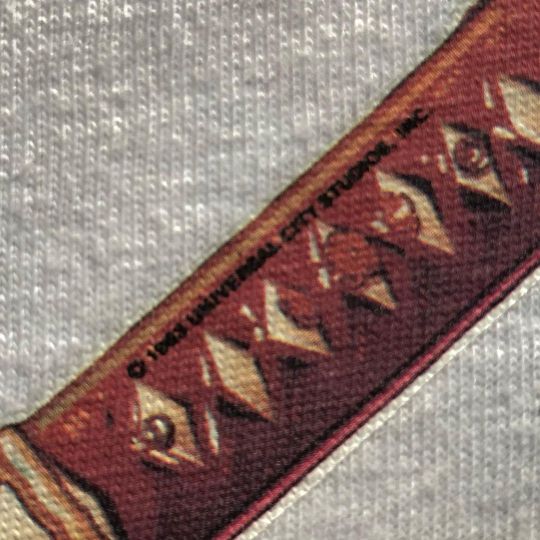

"MY FONDEST MEMORY OF JAPAN IS..."
PIC(S) INFO: Spotlight on a vintage T-shirt design for the 1983 war film, "Merry Christmas, Mr. Lawrence" (戦場のメリークリスマス), co-written & directed by Nagisa Ōshima. T-shirt from the private collection of @g2desu in Osaka.
"My fondest memory of Japan is the snow. The trees covered with snow."
-- LT. COLONEL JOHN LAWRENCE (played by Tom Conti)
Source: www.picuki.com/media/3072862820336236994.
#坂本龍#Merry Christmas Mr. Lawrence#1983#80s Cinema#Japanese Cinema#Vintage Tee#Vintage T-Shirt#T-Shirt Design#David Bowie#Battlefield's Merry Christmas#World War II#80s Style#Vintage T-Shirts#Merry Christmas#Lt. Col. John Lawrence#戦場のメリークリスマス#Merry Christmas Mr. Lawrence 1983#Furyo#Senjō no Merī Kurisumasu#David Bowie 1983#Nagisa Ōshima#Furyo Prisoners of War 1983#1980s#War Movies#Mr. Lawrence#War Films#Vintage Tees#Ryuichi Sakamoto#Cinema#80s Movies
10 notes
·
View notes
Text

Famous 1910 births.
Patsy Kelly (American actress)
John Banner (Austrian-American actor)
Arnold Moss (American actor)
Davy Sharpe (American actor & stuntman)
Friar Dominique Pire (Belgian Catholic monk)
Arthur Hunnicutt (American actor)
Marc Lawrence (American actor)
Vaughn Taylor (American actor)
Joan Bennett Wilde (American actress)
Andō Momofuku (Taiwanese-Japanese inventor & businessman)
Claire Trevor Bren (American actress)
St. Jacinta Marto (Portuguese Catholic saint)
Kurosawa Akira (Japanese movie director)
Capt. Adolph Malan (South African air force pilot)
Lt. Cmdr. Richard Best (American naval pilot)
Stanisław Kowalski (Polish sprinter & supercentenarian)
Simone Simon (French actress)
June Gittelson (American actress)
Marie-Rose Tessier (French supercentenarian)
Scatman Crothers (American actor & guitarist)
Lady Rachel Redgrave (British actress)
Sir Christopher Cockerell (British engineer & inventor)
Charles Cummings (American actor)
Howlin' Wolf (American singer & guitarist)
Ted Richmond (American movie producer)
Cmdr. Jacques-Yves Cousteau (French naval commander & oceanographer)
Mary Wickes (American actress)
Rev. J. Harold Smith (American evangelist)
Roy J. Plunkett (American inventor)
Louise Laroche (French Titanic survivor)
Domenica Ercolani (Italian supercentenarian)
Gloria Stuart Sheekman (American actress & artist)
Cmdr. Carlos Betances (Puerto Rican army soldier)
Sally Blane Foster (American actress)
Col. Dr. John Stapp (American air force colonel & doctor)
William Hanna (American animator)
Ken Lynch (American actor)
Muriel Evans Worcester (American actress)
Lt. Gen. Gordon Blake (American air force general)
Ruthie Tompson (American animator)
Lupe Tovar Koehner (Mexican-American actress)
Jane Wyatt Ward (American actress)
Sor. St. Alphonsa Of The Immaculate Conception (Indian Catholic nun & saint)
George Cisar (American baseball player)
Mother St. Teresa (Albanian-Indian Catholic nun & saint)
Georges Loinger (French resistance fighter)
Kondo Mine (Japanese supercentenarian)
Charles Nichols (American animator & movie director)
Margaret Lindsay (American actress)
Adm. Ignatius J. Galantin (American naval admiral)
Virginia Bruce (American actress)
Bonnie Parker (American criminal)
Claudia Baccarini (Italian supercentenarian)
Robert McKimson (American animator & tv director)
William Rorke (American actor)
#Religion#Celebrities#Movies#TV Shows#New York#Ukraine#Austria#New York City#Missouri#Belgium#Arkansas#Massachusetts#New Jersey#Money#Food#Taiwan#Japan#Portugal#Planes#South Africa#Boats#Sports#Races#Poland#France#Music#U.K.#Mississippi#Illinois#South Carolina
0 notes
Text
In 1863, Mississippi farmer Newt Knight serves as a medic for the Confederate Army. Opposed to slavery, Knight would rather help the wounded than fight the Union. After his nephew dies in battle, Newt returns home to Jones County to safeguard his family but is soon branded an outlaw deserter. Forced to flee, he finds refuge with a group of runaway slaves hiding out in the swamps. Forging an alliance with the slaves and other farmers, Knight leads a rebellion that would forever change history. Credits: TheMovieDb. Film Cast: Newton Knight: Matthew McConaughey Rachel: Gugu Mbatha-Raw Moses Washington: Mahershala Ali Serena Knight: Keri Russell Daniel: Jacob Lofland Sumrall: Sean Bridgers Lieutenant Barbour: Brad Carter Miss Ellie: Jane McNeill Prosecuting Attorney: Gary Grubbs Jasper: Christopher Berry Amos Deason: Joe Chrest Quitman: David Jensen Injured Soldier: Kurt Krause Confederate Color Guard: Carlton Caudle Freedman 1: Martin Bats Bradford Matthew Yates: Matt Lintz Mary: Kerry Cahill Annie: Jessica Collins Confederate Soldier: Juan Gaspard Junie Lee: Liza J. Bennett Polling Station Clerk: David Maldonado Schoolgirl: Serenity Neil Chester: Lawrence Turner Mrs. Deason: Lara Grice Col. Robert Lowry: Wayne Pére Farmer 1: Jim Klock Town Folk: Emily Bossak Sergeant: P.J. Marshall Third Man: Ritchie Montgomery Stillman Coleman: Mattie Liptak Aunt Sally: Jill Jane Clements Col. McLemore: Thomas Francis Murphy Old Man: Johnny McPhail Lt. Barbour: Bill Tangradi First Man: William Mark McCullough Edward James – Cotton Field Worker: Sam Malone Boy at Alice Hotel: Kylen Davis Farmer 2: Will Beinbrink George: Troy Hogan Confederate Soldier: Cy Parks Ward: Dane Rhodes Second Woman / Yeoman Farmer: Lucy Faust Yeoman Girl: Stella Allen Older Coleman Brother: Cade Mansfield Cooksey Maroon (uncredited): Tahj Vaughans Davis Knight: Brian Lee Franklin Film Crew: Casting: Debra Zane Production Design: Philip Messina Costume Design: Louise Frogley Editor: Juliette Welfling Producer: Jon Kilik Supervising Art Director: Dan Webster Editor: Pamela Martin Director of Photography: Benoît Delhomme Producer: Scott Stuber Executive Producer: Oren Aviv Set Decoration: Larry Dias Writer: Gary Ross Executive Producer: Robert Simonds Executive Producer: Robin Bissell Art Direction: Andrew Max Cahn Sound Re-Recording Mixer: Paul Hsu Executive Producer: Wang Zhonglei Executive Producer: Stuart Ford Prosthetics: Gary Archer Foley: Marko Costanzo Makeup Department Head: Nikoletta Skarlatos Executive Producer: Wang Zhongjun Co-Producer: David Pomier First Assistant Director: Eric Heffron Assistant Costume Designer: Meagan McLaughlin Foley: Eric Milano Second Unit Director: Garrett Warren Visual Effects Editor: Gershon Hinkson Executive Producer: Michael Bassick Makeup Artist: Kris Evans Executive Producer: Bruce Nachbar “B” Camera Operator: Jerry M. Jacob Executive Producer: Matt Jackson Additional Camera: Michael Watson Executive Producer: Christopher Woodrow Hairstylist: Felicity Bowring Casting: Meagan Lewis Music Editor: John Finklea Executive Producer: Jerry Ye Set Designer: Randall D. Wilkins Still Photographer: Murray Close Sound Re-Recording Mixer: Mike Prestwood Smith First Assistant “A” Camera: Chad Rivetti Special Effects Coordinator: David K. Nami Hair Department Head: Jules Holdren Key Hair Stylist: Melizah Anguiano Wheat Set Costumer: Adriane Bennett Costume Supervisor: Carlane Passman Prosthetic Makeup Artist: Matthew O’Toole Visual Effects Producer: Lisa Beroud Key Hair Stylist: Theraesa Rivers Executive Producer: Russell Levine Additional Camera: Greg Morris Set Costumer: Tom Cummins Art Department Coordinator: Wylie Griffin Supervising Dialogue Editor: Branka Mrkic Visual Effects Supervisor: Kelly Port Second Assistant “C” Camera: Griffin McCann Set Costumer: Lisa Magee Wigmaker: Khanh Trance Art Direction: Chris Craine Gaffer: Bob Bates Original Music Composer: Nicholas Britell First Assistant “C” Camera: Wade Whitley Co-Producer: Diana Alvarez Second Second Assistant Director: Marvin Williams “A” Came...
0 notes
Photo

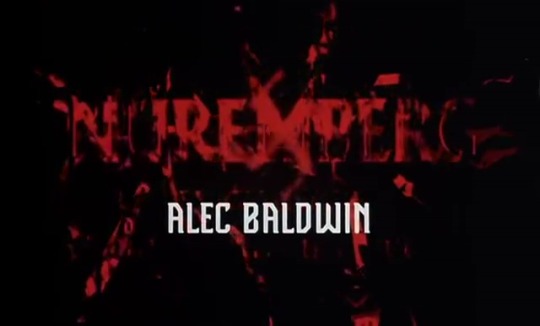
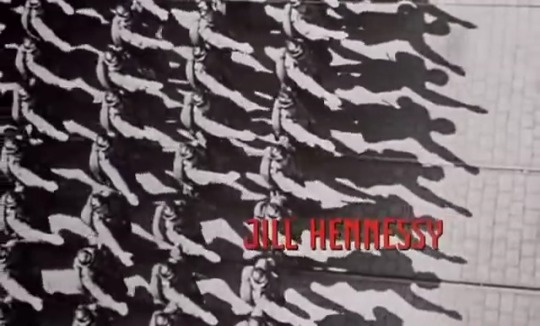

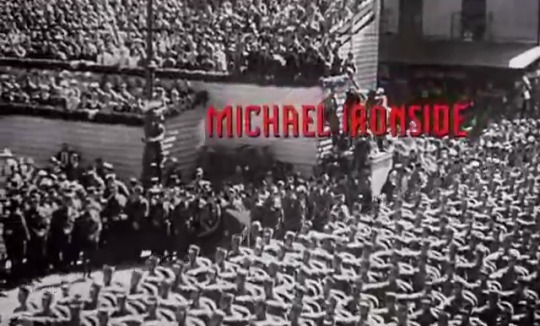

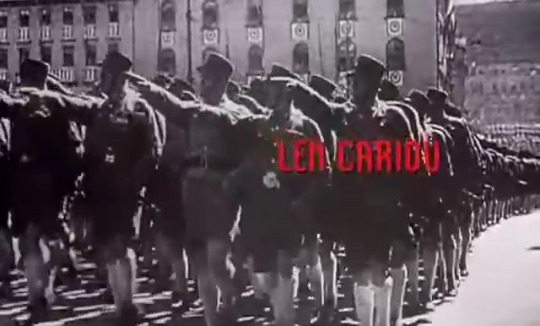
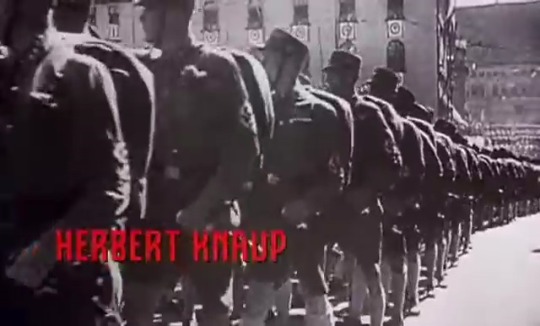


Nuremberg - TNT - July 16 - 17, 2000
Historical Drama (2 episodes)
Running Time: 180 minutes
Stars:
Alec Baldwin as Supreme Court Justice Robert H. Jackson
Brian Cox as Hermann Göring
Christopher Plummer as Sir David Maxwell Fyfe
Jill Hennessy as Elsie Douglas
Matt Craven as Capt. Gustave Gilbert
Christopher Heyerdahl as Ernst Kaltenbrunner
Roger Dunn as Col. Robert Storey
David McIlwraith as Col. John Amen
Christopher Shyer as Brig. Gen. Telford Taylor
Hrothgar Mathews as Thomas J. Dodd
Herbert Knaup as Albert Speer
Frank Moore as Hans Frank
Frank Fontaine as Wilhelm Keitel
Raymond Cloutier as Karl Dönitz
Bill Corday as Alfred Jodl
Ken Kramer as Fritz Sauckel
Max von Sydow as Samuel Rosenman
Sam Stone as Julius Streicher
Douglas O'Keeffe as Baldur von Schirach
Benoit Girard as Joachim von Ribbentrop
James Bradford as Hjalmar Schacht
Frank Burns as Wilhelm Frick
Erwin Potitt as Walther Funk
Tom Rack as Hans Fritzsche
Roc LaFortune as Rudolf Hess
Colm Feore as Rudolf Höss
Robert Joy as Anton Pachelogg
Dennis St. John as Franz von Papen
Griffith Brewer as Konstantin von Neurath
Gabriel Gascon as Erich Raeder
Julien Poulin as Dr. Robert Ley
Alain Fournier as Alfred Rosenberg
René Gagnon as Arthur Seyss-Inquart
Len Cariou as Francis Biddle
David Francis as Geoffrey Lawrence, 1st Baron Oaksey
Len Doncheff as Gen. Iona Nikitchenko
Paul Hébert as Henri Donnedieu de Vabres
Michael Ironside as Col. Burton C. Andrus
Charlotte Gainsbourg as Marie-Claude Vaillant-Couturier
Geoffrey Pounsett as Maj. Airey Neave
Steve Adams as Gen. Lucius D. Clay
Paul Hopkins as Capt. Dan Kiley
Susan Glover as Emmy Göring
Scott Gibson as Lt. Tex Wheelis
#Nuremberg#TV#Historical Drama#TNT#2000#Title#Alec Baldwin#Jill Hennessy#Brian Cox#Christopher Cox#Michael Ironside#Matt Craven#Len Cariou#Herbert Knaup#Charlotte Gainsbourg#Colm Feore#Robert Joy#Max Von Sydow#Christopher Plummer
12 notes
·
View notes
Photo

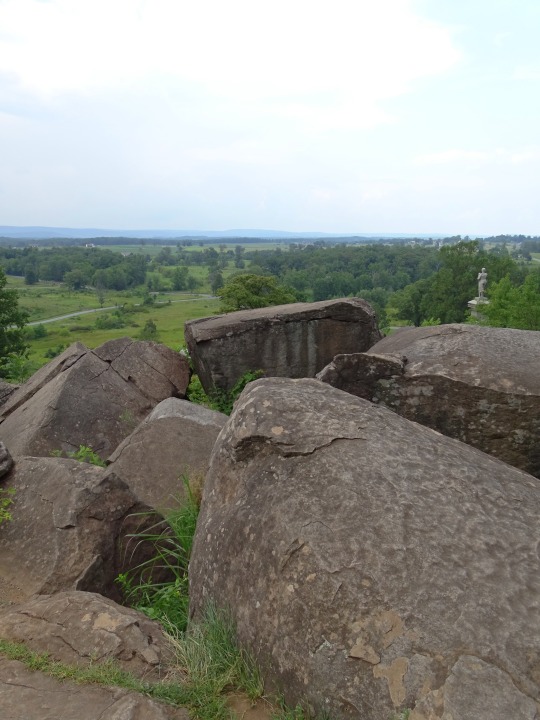
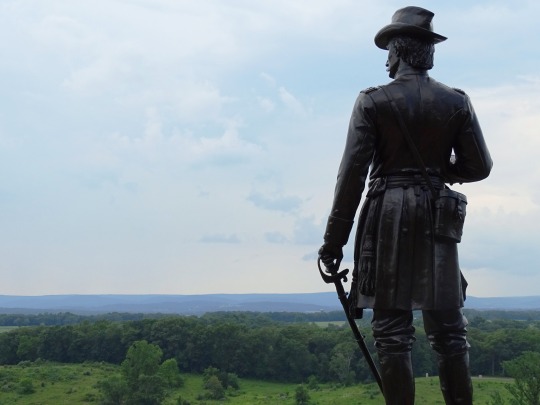







Gettysburg National Military Park (No. 14)
On the second day of the Battle of Gettysburg, July 2, 1863, at about 4 PM, Confederate Lt. Gen. James Longstreet's First Corps began an attack ordered by General Robert E. Lee that was intended to drive northeast up the Emmitsburg Road in the direction of Cemetery Hill, rolling up the Union left flank. Maj. Gen. John Bell Hood's division was assigned to attack up the eastern side of the road, Maj. Gen. Lafayette McLaws's division the western side. Hood's division stepped off first, but instead of guiding on the road, elements began to swing directly to the east in the direction of the Round Tops. Instead of driving the entire division up the spine of Houck's Ridge (the boulder-strewn area known to the soldiers as the Devil's Den), parts of Hood's division detoured over Round Top and approached the southern slope of Little Round Top.
There were four probable reasons for the deviation in the division's direction: first, regiments from the Union III Corps were unexpectedly in the Devil's Den area and they would threaten Hood's right flank if they were not dealt with; second, fire from the 2nd U.S. Sharpshooters at Slyder's farm drew the attention of lead elements of Brig. Gen. Evander M. Law's brigade, moving in pursuit and drawing his brigade to the right; third, the terrain was rough and units naturally lost their parade-ground alignments; finally, Hood's senior subordinate, General Law, was unaware that Hood had been wounded and he was now in command of the division, so he did not exercise control.
In the meantime, Little Round Top was undefended by Union troops. Maj. Gen. George Meade, commander of the Army of the Potomac, had ordered Maj. Gen. Daniel Sickles' III Corps to defend the southern end of Cemetery Ridge, which would have just included Little Round Top. Sickles, defying Meade's orders, moved his corps a few hundred yards west to the Emmitsburg Road and the Peach Orchard. This caused a large salient in the line, which was also too long to defend properly. His left flank was anchored in Devil's Den.
When Meade discovered this situation, he dispatched his chief engineer, Brig. Gen. Gouverneur K. Warren, to attempt to deal with the situation south of Sickles' position. Climbing Little Round Top, Warren found only a small Signal Corps station there. He saw the glint of bayonets in the sun to the southwest and realized that a Confederate assault into the Union flank was imminent. He hurriedly sent staff officers, including Washington Roebling, to find help from any available units in the vicinity.
The response to this request for help came from Maj. Gen. George Sykes, commander of the Union V Corps. Sykes quickly dispatched a messenger to order his 1st Division, commanded by Brig. Gen. James Barnes, to Little Round Top. Before the messenger could reach Barnes, he encountered Col. Strong Vincent, commander of the third brigade, who seized the initiative and directed his four regiments to Little Round Top without waiting for permission from Barnes. He and Oliver W. Norton, the brigade bugler, galloped ahead to reconnoiter and guide his four regiments into position.
Upon arrival on Little Round Top, Vincent and Norton received fire from Confederate batteries almost immediately. On the western slope he placed the 16th Michigan, and then proceeding counterclockwise were the 44th New York, the 83rd Pennsylvania, and finally, at the end of the line on the southern slope, the 20th Maine. Arriving only ten minutes before the Confederates, Vincent ordered his brigade to take cover and wait, and he ordered Col. Joshua Lawrence Chamberlain, commander of the 20th Maine, to hold his position, the extreme left of the Army of the Potomac, at all costs. Chamberlain and his 385 men waited for what was to come.
Source: Wikipedia
#Karl Gerhardt#Brigadier General Gouverneur Kemble Warren#Little Round Top#USA#Gettysburg National Military Park#landscape#countryside#travel#summer 2019#American Civil War#US Civil War#tourist attraction#vacation#original photography#landmark#woods#forest#nature#flora#rock formation#military history#outdoors#vista point#Pennsylvania
4 notes
·
View notes
Link
Chaplains in the 101st Airborne Division have fired the longstanding Jewish lay leaders at Fort Campbell, Kentucky, allegedly without providing any reason, effectively ending Friday night Shabbat services for Jewish soldiers and their families.
The two ranking chaplains also refused to support the Jews’ attempts to celebrate Passover on March 30, the first night of the eight-day long religious celebration, allegedly because it conflicted with Christians’ Good Friday observances and would save money during the installation’s four-day holiday.
Jeanette Mize, her husband, Curt, and son, Lawrence, served as lay leaders for Jewish worship on the installation for nearly two decades. On Feb. 28, the three were allegedly fired without cause under the direction of the division chaplain, Col. John Murphy, and his deputy chaplain, Lt. Col. Sean Wead.
“There was no explanation why I was fired,” Jeanette Mize told Army Times.
She added that her family has “faithfully provided weekly Shabbat and yearly religious worship events since 1999,” and they have worshiped at Fort Campbell since 1984.
“This is the first time in at least 34 years that the Jewish soldiers and their families have been denied weekly Shabbat worship at Fort Campbell,” she said.
Mize and her family have never been paid for the services they provide for the roughly 80 members of the Jewish community on Fort Campbell.
“There is no synagogue in the Fort Campbell area or the nearest towns of Hopkinsville or Clarksville,” she said. “The nearest synagogue is located in Nashville, more than 50 miles away.”
Mize added that other religious groups at Fort Campbell could actually worship nearby, "outside the gate," but there is still worship at Fort Campbell for these organizations.
At the meeting in which she was terminated, two subordinate chaplains did not give her a reason for her dismissal, and would only say they appreciated her service of many years, according to Mize.
“I asked him what he ‘appreciated,’ since he and [the other chaplain] had never been to a worship event, even though I had invited them for High Holy Days and Shabbat,” she said.
One of the chaplains told her he had been busy with a Catholic event and that another Christian Army chaplain reported back to him.
When Mize said that chaplain has never attended a religious worship service, he responded that “it would compromise his religion to attend,” according to Mize.
“They had to celebrate Passover on a non-Passover date,” Weinstein said. “That’s like telling Christians ‘I know you want to do Christmas on Dec. 25, but it’s more convenient if you do it on Dec. 7, so we can save money.’ ”
Mize said she was told that if the Jewish community still wanted to hold a Passover event on the proper night, there would be no advertising or support for it.
“When you say that some of the most senior military chaplains can’t even observe Jewish faith practices because it would be offensive to their religious views, it doesn’t get much worse than that, except when you tell them that if they want the base chaplains to support Passover, they have to choose a day that isn’t Passover,” Weinstein said.
Mize added that one chaplain in particular, whom she characterized as a fundamentalist Christian, bullied and threatened to take over the religious decisions for Jewish worship after he was assigned to be the Jewish lay leaders’ chaplain sponsor in the summer of 2017.
“I made appeals to replace him,” Mize said. “Nothing was done about this. [He] enjoyed his position and exerted his authority.”
Mize said the lower level chaplains were under the direction of Murphy and Wead, who she claims were transparent in their intention to make conditions so bad that she would quit. The dismissals came when she would not do that, according to Mize.
24 notes
·
View notes
Link
Witten’s ends his speech by pointing out that despite the constant barrage of nonsense claims to investigate, "the power of a Vice President of a big company is so great that the reason there was a laboratory at Wright Field [today known Areas A and C of Wright Patterson Air Force Base] was to find out what we were doing and to help us do it and I got a contract from Wright Field to do it - to do gravity. Which I did, very happily." It’s unknown what, if anything, ever came of Witten’s research or the program's other related research. While we haven’t found a record of him at Wright Patterson to confirm his account, Witten did in fact publish several theoretical articles concerning general relativity throughout that period including “Invariants of General Relativity and the Classification of Spaces”, “Geometry of Gravitation and Electromagnetism”, and “Conformal Invariance in Physics”, all of which list Witten as an employee of the Research Institute for Advanced Studies established by Martin. The anti-gravity work Witten claims to have conducted at RIAS on behalf of Martin is corroborated by a series of three articles written by aviation journalist Ansel Talbert and published in the New York Herald Tribune on November 20, 21, and 22, 1956. Talbert served as the aviation correspondent for the Herald Tribune from 1953 until the paper shut down in 1966, after which he wrote for various aviation magazines and trade publications. New York Herald Tribune The front page of the November 20, 1955 issue of the New York Herald Tribune. The articles outline several research institutes that were focused on unlocking the secrets of gravity in the 1950s, including several major universities and private laboratories. A key part of much of the research conducted at these facilities involved relatively down-to-earth topics like electromagnetism, rotating masses at high speeds, and various methods of attempting to reduce an aircraft’s mass. Ansel Talbert was offered a firsthand glimpse into the research conducted at many of the laboratories set up in the 1950s to research gravity and attempts to combat it. His series of articles exploring the subject mention the anti-gravity interests and research of some of the biggest names in aviation: William P. Lear, Lawrence D. Bell, Dr. Igor I. Sikorsky, Martin's Vice President Trimble, and even frozen foods magnate Clarence Birdseye. "Mr. Birdseye gave the world its first packaged quick-frozen foods and laid the foundation for today's frozen food industry," Talbert wrote, "more recently he has become interested in gravitational studies." New York Herald Tribune Lawrence Bell of Bell Aircraft with Lt. Col Frank J. Everest, Maj. Charles Yeager, and Maj. Arthur Murray. According to Talbert's articles, Bell believed that is was possible "to cancel out gravity instead of fighting it." Talbert’s series offers a fascinating glimpse into the many anti-gravity research efforts which were underway in the mid-1950s, but like all accounts of anti-gravity or breakthrough propulsion research, none of the subjects Talbert interviewed offered any suggestion that conclusive working anti-gravity technologies ever came from these endeavors. Still, Talbert points out that some of the brightest minds in aerospace engineering and physics were devoted to studying gravity at the time, studies which led to important breakthroughs in general relativity: The current efforts to understand gravity and universal gravitation both at the sub-atomic level and at the level of the universe have the positive backing today of many of America's outstanding physicists. These include Dr. Edward Teller of the University of California, who received prime credit for developing the hydrogen bomb; Dr. J. Robert Oppenheimer, director of the Institute for Advanced Study at Princeton; Dr. Freeman J. Dyson, theoretical physicist at the Institute, and Dr. John A. Wheeler, professor of physics at Princeton University who made important contributions to America's first nuclear fission project. It must be stressed that scientists in this group approach the problem only from the standpoint of pure research. They refuse to predict exactly in what directions the search will lead or whether it will be successful beyond broadening human knowledge generally. One of the biggest takeaways from Talbert’s series is the optimism shared by many of those involved with the project, as well as the stigma surrounding such an endeavor, even back then: Grover Loening, who was the first graduate in aeronautics in an American university and the first engineer hired by the Wright Brothers, holds similar views. Over a period of forty years, Mr. Loening has had a distinguished career as an aircraft designer and builder and recently was decorated by the United States Air Force for his work as a special scientific consultant. "I firmly believe that before long man will acquire the ability to build an electromagnetic contra-gravity mechanism that works," he says. "Much the same line of reasoning that enabled scientists to split up atomic structures also will enable them to learn the nature of gravitational attraction and ways to counter it." Right now there is considerable difference of opinion among those working to discover the secret of gravity and universal gravitation as to exactly how long the project will take. George S. Trimble, a brilliant young scientist who is head of the new advanced design division of Martin Aircraft in Baltimore and a member of the sub-committee on high-speed aerodynamics of the National Advisory Committee for Aeronautics, believes that it could be done relatively quickly if sufficient resources and momentum were put behind the program. "I think we could do the job in about the time that it actually required to build the first atom bomb if enough trained scientific brainpower simultaneously began thinking about and working towards a solution," he said. "Actually, the biggest deterrent to scientific progress is a refusal of some people, including scientists, to believe that things which seem amazing can really happen... I know that if Washington decides that it is vital to our national survival to go where we want and do what we want without having to worry about gravity, we'd find the answer rapidly." Transcribed full text versions of Talbert’s articles "Conquest of Gravity Aim of Top Scientists in U.S.," "Space-Ship Marvel Seen If Gravity is Outwitted," and "New Air Dream - Planes Flying Outside Gravity" can be found online here, while digital versions of the articles as they appeared in the New York Herald Tribune can be found through the Herald Tribune archives available through the ProQuest database or the New York Public Library system. New York Herald Tribune An op-ed sent to the New York Herald Tribune in response to Talbert’s series. The Aerospace Research Laboratories At Wright Patterson Air Force BaseGeorge Trimble, Clarence Birdseye, and Lawrence Bell weren’t the only ones interested in researching anti-gravity. Talbert's series reported that nearly every major aerospace company at the time was involved in some way with researching "the gravity problem": Convair, Lear, Sikorsky, Sperry-Rand Corp., General Dynamics, and Avro Canada. Just as Dr. Louis Witten mentioned off-hand in the closing seconds of his speech at the 27th Texas Symposium on Relativistic Astrophysics, the United States Air Force also established its own gravity research project at Wright Patterson Air Force Base. The project was initially known as the General Physics Laboratory of the Aeronautical Research Laboratories (ARL), but its name was changed to Aerospace Research Laboratories at some point. To head the project, the Air Force hired physicist Joshua N. Goldberg who had recently received his PhD from Syracuse University. According to Goldberg’s Curriculum Vitae, he served as a research physicist at Wright Patterson’s Aerospace Research Laboratories from 1956 to 1962, as well as teaching graduate-level classical mechanics at the Ohio State University Extension at Wright Patterson. Goldberg’s publications from that period show he published a number of theoretical articles in academic journals while working at Wright Patterson, including titles such as “Conservation Laws in General Relativity”, “Measurement of Distance in General Relativity”, and “Einstein Spaces with Four-parameter Holonomy Group.” Many of Goldberg’s peers at Wright Patterson likewise produced peer-reviewed research in general relativity while at Wright Patterson. Numbers vary, but some accounts say dozens of studies were produced by Goldberg’s group. Some of the reports published from that era include equation-dense publications like “Some Extensions of Liapunov’s Second Method” by J.P. LaSalle and “Gravitational Field of a Spinning Mass as an Example of Algebraically Special Metrics” by Roy Kerr. Physical Review Letters Viewpoints differ on the nature of the research conducted at Wright-Patterson under this program. Some have posited that it had to do with actually trying to develop anti-gravity propulsion, while others say its goals were far more mundane. Nevertheless, the research supported by the Air Force led to what some science historians have called the “Golden Age of Relativity,” a title disputed by others, such as German physicist Hubert Goenner, who argues that “to a great extent what was named the ‘Golden age of relativity’ in the United States, may have been nothing but a feature of a general trend in physics after the ‘Sputnik’-shock.” It’s often claimed that the institute at Wright Patterson and other associated Air Force-funded laboratories were set up merely to investigate reports of Russian anti-gravity research to see if America's adversaries had achieved what the United States had not been able to. The anti-gravity research conducted at Wright Patterson concluded in the early 1970s with the passage of the Mansfield Amendments. The first of these, passed in 1970, limited “military funding of research that lacked a direct or apparent relationship to a specific military function.” According to an Office of Technology Assessment report delivered to the U.S. House of Representatives in 1991, these Mansfield Amendments for some years somewhat slowed the rate of U.S. military research into the types of lofty, abstract topics studied at Wright Patterson throughout the 1950s and 1960s. Following those Amendments, the Department of Defense’s research strategy shifted more towards the proposal-grant model seen at university and private laboratories today. That is not to say that the U.S. military’s research into gravitation ended with the Mansfield Amendments or was limited solely to Goldberg’s group at Wright Patterson. There is a wealth of research in the public realm that shows the Air Force’s research into these concepts continued long after the scientists at that base moved on to long careers in academia. In 1972, an ad hoc group with Franklin Mead, then Senior Aerospace Engineer with the Air Force Aerospace Research Laboratories, serving as editor had published a technical report titled “Advanced Propulsion Concepts - Project Outgrowth” for the Air Force Rocket Propulsion Laboratory at Edwards Air Force Base. The document discusses various advanced propulsion concepts ranging from traditional rocket propulsion to “anti-gravity propulsion,” to which an entire chapter is dedicated. Two main approaches are outlined in Project Outgrowth: those using gravitational absorption, and those based on unified field theory which unites electromagnetism and gravitation. While the document notes that these approaches would “require some major breakthroughs in materials,” it points out that “no new or radical change in fundamental physics” would be required to make these breakthroughs a reality. In other words, Mead and the rest of the study group believed that these types of breakthrough propulsion concepts may be possible once materials sciences caught up with concepts developed in theoretical physics. USAF Throughout the expansive Project Outgrowth document, Mead and the other scientists also explored field propulsion, defined as those concepts which use “electric and/or magnetic fields to accelerate an ionized working fluid, or react directly with the environment by electric or magnetic effects.” While a range of theoretical field propulsion approaches were analyzed, they concluded that “it would be impossible within the time constraints of this study to evaluate the field propulsion area completely,” noting however that “more radical concepts may be found in the open literature by those interested in pursuing them.” Still, the document contains quite a few curiosities. One chapter, titled “Electrostatic Effects,” describes the use of electric generators to charge giant metallic spheres buried in the ground six miles apart in symmetrical arrangements. Another sphere would be placed on top of the ground in the center of this arrangement of spheres, which would then be shot up to 620 miles into space when the other spheres are charged with an intense electrical current, according to the document. It is also claimed that vehicles flying in space with charged skins could be used to cause the spheres to change directions instantly without any loss of velocity or use of propellant. USAF As fascinating as this experiment sounds, there is nothing in the document to suggest the Air Force actually sent metal spheres flying into the sky, and the document points out that “analysis of this concept completely ignores the effect of the immense electric fields of the surrounding environment,” noting that ambient ions accumulating around the spheres would nullify the repulsion effect. "Handling and producing charged objects of the magnitude assumed for the analysis may be well beyond the reach of technology for decades to come“ and "all of the ideas discussed lack theoretical and technical merit,” the study group concluded. USAF The same document outlines theoretical approaches at using superconductors to achieve electromagnetic spacecraft propulsion, noting that the applications of high energy electromagnetic fields range far beyond propulsion: The greatest advantage of this concept is that the system is initially charged on earth with a tremendous amount of massless energy which is stored in a low-loss propulsion system. [...] Similar to other low-thrust vehicles, this system is capable of accelerating to very high velocities when operating over great distances for substantial periods of time. [...] This system could be used to decelerate vehicles approaching the Earth at high speed. Militarily, this concept could, with its high magnetic field, destroy, deflect, or severely damage incoming high-speed projectiles. USAF The Project Outgrowth document concludes by arguing that while many of these concepts are still out of the grasp of the USAF, advances in materials and engineering could make what in 1972 seemed like fantasy a reality in the decades to come: Obviously, advancements in certain areas of technology could make a number of concepts suddenly very attractive. Improvements in high energy lasers by several orders of magnitude of energy output or new concepts involving long-distance energy transfer would make both laser propulsion and infinite Isp ramjet very attractive. The development of higher current density superconductors, metallic hydrogen, or even room temperature superconductors would make many of the magnetic concepts more attractive. [...] Radical departures from time-honored, well-proved approaches are either discarded or lack visualization. Possibly, not until man truly becomes a creature of space will the restrictions imposed on his imagination be removed and radically new propulsion concepts devised. We are just beginning to understand the true nature of space and to attempt to utilize this environment for our propulsion needs. The same concepts explored in the Project Outgrowth document were later examined by subsequent Air Force-funded studies. In 1988, the New York-based Veritay Technology, Inc. submitted the document “21st Century Propulsion Concept” to the Air Force Astronautics Laboratory (AFAL) at Edwards Air Force Base. The document looks at the Biefield-Brown effect, a controversial theory that claims that electrical fields can produce propulsive forces sometimes referred to as ionic wind. The AFAL was able to generate minuscule measures of propulsion with the concept, but concluded that “ion propulsion effects are negligible.” A similar report from 1989 titled “Electric Propulsion Study” also complied for the Astronautics Laboratory at Edwards outlines a variety of theories and experiments that explore the interactions between gravitational, electrical, and electromagnetic fields. Concepts like ionic wind, the Mach effect, and various applications of high energy electromagnetic fields are discussed. One brief chapter explores the concept of inertial mass variation using a rotating cylinder filled with mercury. The Air Force concluded that the experiment showed little promise and that “no AFAL action is suggested at this time” but that “should an experiment by external agencies be done with positive results, then this area should be reconsidered.” Ultimately, the document concludes that while much of the research it cites is still in its infancy, inertial mass reduction techniques may offer the most promising results with further study: It is recommended that policies and plans take into consideration long time studies in the area of gravity and inertia. These areas deserve more emphasis. This is likely to be more important than any single experimental program. Since chemical propulsion is reaching its theoretical limits and nuclear propulsion has political difficulties, it is more likely that gravitational and electromagnetic studies will lead to future breakthroughs than any nuclear force studies (with the possible exception of more recent low temperature fusion work). The Air Force continues to look into ways of defying gravity without the use of propellants and some technical reports maintain that this will soon be possible. According to the 2006 study “Advanced Technology and Breakthrough Physics for 2025 and 2050 Military Aerospace Vehicles” which was published by the American Institute of Physics, some scientists claim that next-generation propulsion may be achieved sometime within the next three decades. The study was compiled at the request of the U.S. Air Force Research Laboratory (AFRL) and examines the technological breakthroughs that researchers believed could be developed and implemented by 2025 and 2050. American Institute of Physics The conceptual "2050 vehicle" featuring hypothetical inertial mass reduction technology which is theorized to extract energy from the quantum vacuum. While most of the report centers around compact fusion reactors and the developments of new high temperature composite materials, the section on the “2050 Vehicle” predicts that the jet propulsion and power systems of this hypothetical aircraft will come in the form of propellant-less field propulsion based on the principle of inducing mass fluctuations using high-frequency electromagnetic fields: One example of propellant-less field propulsion [...] proposes the use of high voltage and high frequency electromagnetic (em) field pulsations to induce mass fluctuations within the electronic and ionic structure of dielectric materials - to cause a favorable “gravinertial” field coupling with nearby and distant matter that results in unidirectional force. Of course, as we now know, the USAF isn’t the sole branch of the military openly looking into next-generation hypothetical vehicles based on concepts of electromagnetic fields and inertial mass variation. Based on the recent announcement declaring a partnership with TTSA, we know even the U.S. Army is also exploring similar concepts for next-generation ground vehicles that exploit the same principles the USAF has explored for decades: mass manipulation, electromagnetic metamaterial waveguides, and quantum physics. Civilian Research Into Gravitation, Electromagnetism, And PropulsionThe military isn’t the only sector that has for decades conducted research that has explored the boundaries of aerospace propulsion and general relativity. In 1996, NASA funded an endeavor known as the Breakthrough Propulsion Physics (BPP) Program which invited some of the brightest minds in physics and aerospace engineering to propose radical new ideas to propel spaceflight into a new paradigm. In a paper outlining the BPP program presented at the Second Symposium on Realistic Near-Term Advanced Scientific Space Missions in 1998, its director, Marc Miller, offered an overview of NASA’s aims for the project, noting that “it is known from observed phenomena and from the established physics of General Relativity that gravity, electromagnetism, and spacetime are inter-related phenomena” and that “these ideas have led to questioning if gravitational or inertial forces can be created or modified using electromagnetism.” Many of the ideas Miller and the NASA BPP program describes were developed or are better understood thanks to the research funded by Wright Patterson, including Hermann Bondi’s concept of negative mass (Bondi’s group at Kings College, London received funding from the U.S. Air Force) and Joshua Goldberg’s theory of gravitational radiation. In an attempt to achieve breakthrough propulsion based on these concepts, NASA’s project identified three major barriers that stood in the way of their main goal of achieving interstellar travel: (1) MASS: Discover new propulsion methods that eliminate or dramatically reduce the need for propellant. This implies discovering fundamentally new ways to create motion, presumably by manipulating inertia, gravity, or by any other interactions between matter, fields, and spacetime. (2) SPEED: Discover how to attain the ultimate achievable transit speeds to dramatically reduce travel times. This implies discovering a means to move a vehicle at or near the actual maximum speed limit for motion through space or through the motion of spacetime itself (if possible, this means circumventing the light speed limit). (3)ENERGY: Discover fundamentally new modes of on board energy generation to power these propulsion devices. This third goal is included since the first two breakthroughs could require breakthroughs in energy generation, and since the physics underlying the propulsion goals is closely linked to energy physics. In 1997, NASA’s Lewis Research Center, now known as the John H. Glenn Research Center at Lewis Field, held a conference on these breakthrough propulsion concepts, the proceedings of which are worth a read and contain titles such as “Inertial Mass as a Reaction of the Vacuum to Accelerated Motion”, “Force Field Propulsion”, and “The Zero-Point Field and the NASA Challenge to Create the Space Drive”. From what little we know or think we know about Salvatore Cezar Pais, the elusive inventor of the Navy’s intriguing if not puzzling anti-gravity ‘UFO’ patents that we’ve explored in our previous reporting, he was working on his PhD dissertation at Case Western Reserve University while serving as a NASA Graduate Student Research Fellow at NASA’s John H. Glenn Research Center at Lewis Field at the time of the conference. There’s no concrete evidence that Pais attended the workshop, but according to the document’s foreword, 12 students were in attendance. The table of contents for the conference proceedings lists a total of 449 pages, the last of which is a list of workshop participants. However, the versions available online stop at page 389. We are currently pursuing a Freedom of Information Act request to obtain the missing pages. Confirming Pais' presence at the conference would be significant because many of the exact same revolutionary concepts that NASA was exploring in terms of unlocking new forms of propulsion and space travel are the same types of concepts found throughout the patents for his "hybrid aerospace-underwater craft" and "high energy electromagnetic field generator." Many of the participants at NASA's workshop are also cited throughout Pais' patents and publications. Placing Pais at the conference would add to the body of evidence which suggests the technologies in the Navy's patents may have been in the works for the past 20 years, at least as far as the inventor is concerned. In reality though, as we've laid out here, many of the concepts in Pais' patents are similar to those which were researched at Wright-Patterson and other facilities in the 1950s and are still being explored today. Aside from NASA, academic and independent laboratories have been researching the same principles and approaches the Air Force and other military laboratories have been looking into for decades. One of the most commonly researched areas is in hypothetically reducing an aircraft’s mass using electromagnetism, preferably to zero, and several Lockheed Martin researchers have been involved with quite a few theoretical studies into altering inertial mass (see Haisch, Rueda, and Puthoff, 1998; Rueda and Haisch, 1998; Haisch and Rueda, 1999; and Woodward, Mahood, and March 2001). A large body of peer-reviewed research into mass reduction involves using advanced superconducting materials such as yttrium barium copper oxide, or YBCO (see Podkletnov and Nieminen, 1992; Li et al, 1997; and Podkletnov and Modanese, 2001). Some of these studies, many of them more than 20 years old, reported observing mass reductions of up to two percent. Of course, just because scientists report a peer-reviewed result doesn’t mean their data can’t be challenged or have been impacted by spurious factors. Other attempts to overcome and harness gravity focus on the use of electromagnetic fields. In the 2007 publication “The Connection between Inertial Forces and the Vector Potential”, researchers found a connection between electric and magnetic fields, writing that there is a “possibility to manipulate inertial mass" and potentially "some mechanisms for possible applications to electromagnetic propulsion and the development of advanced space propulsion physics.” In 2010, an Air Force-funded study at the University of Florida leveraged these principles to design and test a "Wingless Electromagnetic Air Vehicle (WEAV)" which is claimed to employ "no moving parts and assures near-instantaneous response time." The study writes that this vehicle is designed to support the Air Force Research Laboratory's strategy to “deliver precision effects: ubiquitous, swarming sensors and shooters” by 2015-2030. The study was able to produce a disc that "was able to hover a few millimeters above the surface for a sustained duration (about three minutes)" and noted that "prototypes of varying radius were also successfully 'flown', demonstrating that WEAV is scalable." Air Force Office of Scientific Research Many other approaches have focused on the unique properties of novel materials. The 2007 publication “Direct Experimental Evidence of Electromagnetic Inertia Manipulation Thrusting" reports “new experimental results suggesting that ‘propellantless’ propulsion without conventional external assistance has been achieved by means of electromagnetic inertia manipulation” using piezoelectric materials, compounds that change shape when subjected to an electrical charge. In fact, several researchers have reported significant results in mass manipulation using a specific piezoelectric compound, lead zirconate titanate (PZT), which is found throughout several of the Navy’s recent patents. One physicist in particular, Dr. James Woodward of California State Fullerton, has found repeated success in altering the mass of small test samples of PZT. While the levels of mass reduction Woodward has observed are tiny, so are the samples and energy levels he has used. Still, in one study published with aerospace engineer Paul T. March, then at Lockheed Martin, the authors note that “very large mass fluctuation effects should be producible with only relatively modest power levels,” but are beyond the scope and scale of their study. Even so, Woodward’s results have been so promising that at least two Air Force studies, the 1989 technical report “Electric Propulsion Study” and the 2017 paper “Movement and Maneuver in Deep Space: A Framework to Leverage Advanced Propulsion”, call attention to his research in particular and note that his approach seems most promising. However, the 2017 Air Force paper notes that “obvious institutional and funding barriers stand in the way” and that “materials science and engineering work would be required to produce new piezoelectric materials and compensate for natural resonance, mechanical fatigue, and thermal effects.” Perhaps for that reason and for likely many more, various branches of the Armed Forces have for years been actively researching metamaterials that can propagate high energy electromagnetic fields. Navy budget documents show that between 2011 and 2016, the Navy’s In-House Laboratory Independent Research program conducted research into the “dispersion and control of electromagnetic (EM) waves in the microwave (RF) region, using fabricated metamaterial structures”. Department of Defense Starting in 2017, the Navy combined several program elements under one title, changing the way individual projects are reported in their budget and thus making it more difficult to know whether this metamaterial research continues today. Scratching The Surface While Not Knowing What Lies Beneath ItThe research cited here is only a brief look at a handful of the numerous studies the Air Force, other branches of the military, and various academic laboratories have conducted into "anti-gravity" and various propellantless propulsion methods, and only those that are available to the public. Anyone familiar with military research and development knows that there is a vast trove of projects, associated data, and technologies the public has yet to be shown and may never be shown. There have been hints of those secret technologies for years offered by insiders of some of America's most high-level aerospace research and development outfits. For instance, Ben Rich, the second director of Lockheed Martin’s Skunk Works, told Popular Science in 1994 the following: “We have some new things. We are not stagnating. What we are doing is updating ourselves, without advertising. There are some new programs, and there are certain things, some of them 20 or 30 years old, that are still breakthroughs and appropriate to keep quiet about [because] other people don’t have them yet.” With this in mind, it is possible that there are certain technologies in existence that once were, but may no longer be the things of science fiction. Regardless, when it comes to harnessing exotic methods of overcoming gravity, the U.S. military’s interest in doing so has continued since the 1950s, and civilian laboratories have been hot on their heels. We're still pursuing answers to the enigma surrounding the recent Navy patents, but to say they have come out of the blue and have no scientific basis whatsoever seems to be not entirely accurate based on the decades of research we've presented here. The same principles and many of the same names cited in Salvatore Pais' patents filed for the US Navy between 2015 and 2018 appear throughout numerous NASA studies, the peer-reviewed publications of the scientific community, and the long history of U.S. government-funded research into general relativity and breakthrough propulsion science. We have to stress once again that this doesn't mean that actually realizing these concepts and putting them to use is possible at this time, or even ever in the future, for that matter. But it does show that there has been an incredibly long and detailed history of interest by the U.S. military and the scientific community in this exotic field that has resulted in significant amounts of research that spans nearly seven decades. All this occurred in spite of the fact that scientists realized as far back as the 1950s that the topic was largely taboo and often scoffed at by the larger scientific community. Once again, what exists behind the curtain of the classified realm is the big wildcard here. With so much research present in the unclassified environment, one can only guess as to just how far the military and their industry partners have actually gone in an effort to obtain the 'Holy Grail' of aerospace engineering. For some, that speculative answer may be not very far at all. For others, it may be quite the contrary. The fact is we just don't know. But at least we do know that the topic, in general, isn't quite as alien as it may seem. Contact the editor: [email protected] Don't forget to sign upYour Email Address
0 notes
Text
Leadership
Another day without an entry from Robert gives me the opportunity to talk about an extraordinary set of decisions that impacted the 35th Division just days before their first “real” action of the war (Robert would have said they hadn’t seen real action yet; I would beg to differ). Less than a week before joining more than a million soldiers in the Meuse-Argonne Offensive, the 70th Infantry Brigade and its regiments changed out several of its key leadership positions. I don’t know that anything like this has happened before or since.
I previewed this a few weeks ago; apologies if I re-use some of the best quotes here.
Chaplain Edwards in From Doniphan to Verdun says this critical transition in leadership positions had started even earlier (emphasis added in bold):
In France during July and August, and the first part of September we lost Grant Davidson, Henry E. Lewis, Edward P. Sammons, John R. Smiley, John P. Grie- bel, and Fred O. Wickham among the Captains. These were all excellent efficient officers; some of them of exceptional ability. They were sadly missed when we went "over the top."
Among the Lieutenants we had removed were Wm. R. Stryker, a fine officer, Jerry F. Duggan, a born soldier, J. O. Ferguson, Wm. C. Gordon, H. P. Lawrence, Howard Frissell, Kiser and Hocker. The removal of these officers, and others whose names the records fail to show, placed the regiment at a real disadvantage.
Not only is it true that these men were for the most part competent officers, who had the full loyalty of the men, but so many were removed that the 140th went into action on September 25th, sadly short of its full complement of officers, and unquestionably suffered because of that fact...
Colonel P. A. Murphy, who had command of the regiment during its training in the Vosges, was relieved from command in the Forest Le Haye. Major Fred L. Lemmon from the 1st Battalion took command for a few days and was relieved by Lieut. Col. C. E. Delaplane, recently a Major in the Ordnance Department with the Regular Army, who was placed in command of an Infantry regiment, a full strength infantry regiment, two days before going into action.
(In my head, I can hear Chaplain Edwards complaining about this: “He was a major in the Ordnance department, and they gave him command of an infantry regiment - a full-strength infantry regiment! - two days before going into action!” I love Chaplain Edwards.)
Later in From Doniphan to Verdun, he returns to this story:
Col. Murphy was relieved Sept. 16th and Maj. Fred L. Lemmon commanded the 140th until Sept. 22nd, when Lt. Col. C. E. Delaplane was given command. He was unacquainted with the officers and men, and was placed in a difficult position. In the days of peace he had commanded small units of men. He had made a good ordnance officer. But to be given 3500 men and ordered to fight them was a sudden shift and an unexpected task. He did the best he could. Companies F, H, I and L were without captains — a whole battalion — and went in under the command of lieutenants. Few of the other companies were fully officered.
The colonels leading the 138th and 139th infantry regiments and the 128th artillery regiment were also relieved of duty in September. And these leadership changes were not just at the regimental level. This is from Heroes of the Argonne:
At 8 o'clock on the evening of September 21, Brigadier General [Charles I.] Martin was notified by the commanding general of the division, Gen. Peter E. Traub, that he was to be relieved of his command of the Seventieth Brigade. The same day General McClure was notified that he was to be relieved of his command of the Sixty-ninth Brigade. General Martin had been with his command since its organization at Camp Doniphan. He had sailed across with it and had seen it through the trench-training period in the Vosges...
[Martin] was going to the rear. He was not to be permitted to lead his troops again into battle, or any other troops. He was done, finished. The blind fight against the Kansas general was being carried to the very opening of the great battle. I can conceive of no action more poorly advised or shorter sighted. A fine brigade was taken out of the hands of a strong, able man, of abundant physical powers to withstand the strain and stress of battle...
As General Martin drove away, hundreds of men and officers of his brigade stood beside the road in the forest to say "good-bye" to their old commander. One reason given for relieving Col. McMahon in the Vosges was that he wept while standing beside a soldier's grave. If tears are valid cause for relief, that whole brigade should have been sent to the rear on Sept. 22.
I’ll give the last word here to historian Edward G. Lengel, who in one paragraph from To Conquer Hell: The Meuse-Argonne, 1918 The Epic Battle That Ended the First World War sums up how unprecedented and unwise all of this was:

Where was Robert today? See the timeline.
Next: Last Day at Camp Marquette
#wwi#ww1#ww1 on this day#ww1 centenary#140th infantry#35th division#AEF#world war one#doughboy#diary
0 notes
Photo

London In 1993
While 1993 saw the rise of Kate Moss and Naomi Campbell— and new age hippies partying across the capital — it also saw the tragic murder of Stephen Lawrence and the Bishopsgate Bombing. New Age rock festival, Stoke Newington, April 1993Source: London24 Run DMC in west LondonSource: Moveyourteeth Princess Diana, Spencer House, London, 1993Source: Dailymail London, 1993Source: 9190307@N05 Notting Hill CarnivalSource: Photo Zen Galina Ulanova of the Bolshoi Ballet in London, 1993Source: Jean Philippede Tonnac London, 1993Source: Magnumphotos Man asleep on the undergroundSource: Philmaxwell The Queen and Princess Diana at the wedding of Lord Linley and Serena StanhopeSource: Mirror Coliseum Cinema, Green LanesSource: Cinematreasures Stephen Lawrence was murdered in an unprovoked attack in April 1993Source: Bbc Pride goes by the Ritz 1993Source: Bbcamerica Bomb damaged area of the City of London, after two blasts ripped through the buildings in the area, April 24, 1993Source: Classic Pics Steffi Graf at Wimbledon in 1993Source: Sporting Heroes Carnaby Street, 1993Source: Cepatri55 Norfolk SquareSource: Pinterest Notting Hill CarnivalSource: Gettyimages Kate Moss and Naomi Campbell, London Fashion Week, 1993Source: Harpersbazaarus Interior of 205 St. John street EC1 in 1993Source: British History Andy Linighan scores the winner for Arsenal in the FA Cup Final at WembleySource: Arsenal New age hippies dancing in Trafalgar Square, July 1993 Source: London24 Sharpshooter Queen Elizabeth II with Chief Instructor Small Arms Corp LT Col George Harvey firing the last shot on a standard SA 80 rifle when she attended the centenary of the Army Rifle Association at Bisley on July 9 1993Source: Dailymail Truck bomb detonates on Bishopsgate, killing one and injuring 44, on 24 April 1993Source: Londonhistorian
http://feedproxy.google.com/~r/londonist/sBMe/~3/PBVcb66lmYQ/london-in-1993
0 notes
Text
Journal Entry #4: Bronzeville

Coming to Illinois Tech and the Chicago Area for the first time, before I knew what the “L”, before I started referring to downtown as “the Loop”, before I knew that a few blocks from Illinois Tech was a neighborhood that had the same name as a town I grew up in in Connecticut (Bridgeport), I knew about the area of Bronzeville.
In fact, a lot of people I interacted would mention Bronzeville in some shape or form.And how could they not? Even the train stop for IIT says Bronzeville. Illinois Tech itself is in Bronzeville area. Many students go to the Starbucks, Millers Pizza, Jimmy John’s and Forever Yogurt right on the edge of the campus’s south side. Others have eaten at the Carbon and Riccobene’s a few blocks past the north side of campus. However, there is a lot more to Bronzeville as a whole.
We started our journey at 35th and State and then walked east along 35th street. We passed by De La Salle High School. I have actually been inside of De La Salle since the Track and Field Team used it for morning practice. I had thought that it was an all boys Catholic school but upon further research I have learned that it is in fact for both males and females and is the only school in the US that educates both girls and boys in separate single gender classrooms.

Across the street from De La Salle is the Chicago Police Department. My first year hear I never realized how close this was and just assumed that there were a lot of CPD officers that patrolled the area. However, the existance of this building would explain why I see CPD almost as much as I see Public Safety on or around campus.

Because of the cold, we took a bus to get to S Martin Luther King Jr Drive. As we rode along, we passed several hair stores, different cell phone carriers, liquor stores and plenty of places to eat. Like Harold’s Chicken, Subway and KFC as well as a new Jamaican restaurant. I also noticed something else. The Meyer’s Ace Hardware is closing. I only knew about the place because I took a tour this past summer with the Black Student Union that highlighted some of the history in the area. This building used to be a famous jazz club called the Sunset Café or the Grand terrace Café. It hosted jazz greats like Ella Fitzgerald and Louis Armstrong. There are still murals up inside the hardware store. According to dnainfo, the owner Dave Meyers had to close because he can no longer afford to stay in business. The building has been in Meyer’s family for three generations, nearly 95 years. No one is sure what will happen to the building and the jazz legacy that it holds but the community wants to see the jazz history and the murals preserved. As of now only the actual building itself is landmarked not the interior.

After to passing the hardware store, we got off of the bus at Martin Luther King Jr. There you could see a statue to the right and a large sign to the left with 35th street being the divide between them.

The statue on the right is the Victory Monument. It is in honor of the Eighth Regiment of the Illinois th National Guard that served in WWI in France. It was an African-American unit that served as part of the the 370th U.S. Infantry. Made by Leonard Crunelle a Frenchman, it was designed in collaboration with John Nyden, a Chicago architect. The soldier on top was an addition to honor all of the African-Amercan soldiers that fought and died in the war. The statue was the first state-sponsored memorial to African-American verterans of WWI.

Across 35th street, there is a map on the ground in front of a sign that talks about the history of Bronzeville. All of the major landmarks of Bronzeville at the time of the map’s creation are depicted. Behind the map is a write up that talks about Bronzeville and it has this sort of awning atop of it that says “Boulevards” and you can see this “Boulevards” signs in other places alone King Drive. I wasn’t able to find out why they are there or what they mean. It may have been on that poster but I didn’t get to read it all the way through. (It is so hard to stand still for any amount of time when it is cold.)

On the ground in front of the Victory Monument and all around as you walk in Bronzeville there is the Walk of Fame plaques laid into the ground. Written are the names of influential members of the Bronzeville community. The ones in front of the Victory Monument included Col. Franklin A. Denison who was the commander of the 8th Regiment Amory and Illinois Assistant Attorney General. There was Lt. George R. Giles who was a WWI hero. Truman Gibson Sr. who founded Supreme Liberty Life Insurance Co. in 1929 and his son Truman Gibson Jr. who was civilian aide to the Secretary of War 1940-1945. There was even Mjr. Robert H. Lawrence Jr. who was the 1st Black Astronaut. It was really nice to see all of the Black people honored on the walk as a Black female. I often grew up seeing others honored and uplifted and to see this was really amazing.

We also saw Yassa. I haven’t been there before but a lot of my friends have talked about this place. I may have eaten food from here but I don’t remember. Have to make a note to go there and eat some time in the future.

In the same area there is a bank with a clock at the top. It is actually the location of the Supreme Life Building. It was the location of the Supreme Life Insurance Company which was the first Black owned and operated insurance company in the northern U.S. It is one of the nine structures in the Black Metropolis-Bronzeville Historic District.


There was also the public library. There is another one actually along State St. as well. But this one is bigger. I like libraries in neighborhoods. They really help to provide the community with access to a lot of knowledge and resources they may not have access to at home.

We passed by the Hartzell Memorial United Methodist Church. We weren’t able to go inside since we visited a little later in the day but upon frtjer research it seems that the pastor here is a woman by the name of Andrea Davidson. That is pretty cool for me seeing as most pastors are male. Hartzell has an active 12 step Serenity Group, a Clothing Closet and HIV/AIDS Ministry. They seem very invested in the community that they serve, which makes sense.

Speaking about churches, on the corner of 31st and King Drive there is this old church that I have passed plenty of times on my way to the beach. It is the Olivet Baptist Church founded on April 6th, 1850. It started as a three person congregation and grew into a vital part of the community.

We also passed a plaque that marks the location of the Douglas Plaza, the site of the Civil War Camp Douglass form 1861 to 1865. It was a prisoner of war camp where 6,000 Confederate soldiers died. Seeing it made me think about all of the recognition to the military and the soldiers that fought being displayed in the community. It is clear that this was a big deal for the community, to serve and to aide during America’s wars. Many Americans have enlisted but you don’t see plaques and statues like the ones in Bronzeville in other places. It is as if some communities have different things that they uplift or acknowledge heavily in their communities.

There were also the different street names like Sammy Davis Jr Drive and Capt. Ernest A. Griffin Place. I personally think it is interesting that people get streets named after them when they pass away. I would rather see these streets named for people when they are living to show that we want to honor and show respect for them in this life for the work that they have done or the things that they have accomplished. Maybe that is just me.

We walked along 31st Street and passed by Dunbar Park. There is also Dunbar High School over near the park. I used to go to go with the track team to run on the track that they have there. I have always noticed the playground but for the first time I took time to stop and notice the statue there. It is of Paul Laurence Dunbar from whom the part gets its name. He was a African American poet, the son of freed slaves. He published his first collection of poetry it 1893. It was called “Oak and Ivy”. Behind the statue, along the semi-circle shaped wall there are a few lines from one of Dunbar’s poems. It really is a beautiful and tranquil space that I got a chance to appreciate more than I did before.


There is a lot more to Bronzeville that one day I really want to dive deeper into. We at Illinois Tech live right in Bronzeville and yet we really don’t talk much about it or do much to unite the students with the community. And I think we should and can do more.
K.N.
Resources/Photos:
http://www.olivetbaptistchurchchicago.org/about-us/index.html
http://www.umc.org/find-a-church/church/81406
http://chicago-outdoor-sculptures.blogspot.com/2009/09/victory-monument.html
https://www.google.com/maps/place/Bronzeville,+Chicago,+IL/@41.8243196,-87.6322747,14z/data=!4m5!3m4!1s0x880e2bf824a02f89:0xcefdff19c5833998!8m2!3d41.8251047!4d-87.6176022- map
https://www.dnainfo.com/chicago/20170118/douglas/meyers-ace-hardware-closing-leaving-historic-jazz-age-relics-at-risk - photo credit
http://chicagopatterns.com/chicago-jazz-history-revealed-at-meyers-ace-hardware/
Other Photos taken by me
0 notes
Text
THE MERRY X-MAS REBLOG THAT GOT AWAY.







"MY FONDEST MEMORY OF JAPAN IS..."
PIC(S) INFO: Spotlight on a vintage T-shirt design for the 1983 war film, "Merry Christmas, Mr. Lawrence" (戦場のメリークリスマス), co-written & directed by Nagisa Ōshima. T-shirt from the private collection of @g2desu in Osaka.
"My fondest memory of Japan is the snow. The trees covered with snow."
-- LT. COLONEL JOHN LAWRENCE (played by Tom Conti)
Source: www.picuki.com/media/3072862820336236994.
#坂本龍#Merry Christmas Mr. Lawrence#1983#80s Cinema#Japanese Cinema#Vintage Tee#Vintage T-Shirt#T-Shirt Design#David Bowie#Battlefield's Merry Christmas#World War II#80s Style#Vintage T-Shirts#Merry Christmas#Lt. Col. John Lawrence#戦場のメリークリスマス#Merry Christmas Mr. Lawrence 1983#Furyo#Senjō no Merī Kurisumasu#David Bowie 1983#Nagisa Ōshima#Furyo Prisoners of War 1983#1980s#War Movies#Mr. Lawrence#War Films#Vintage Tees#Ryuichi Sakamoto#Cinema#80s Movies
10 notes
·
View notes